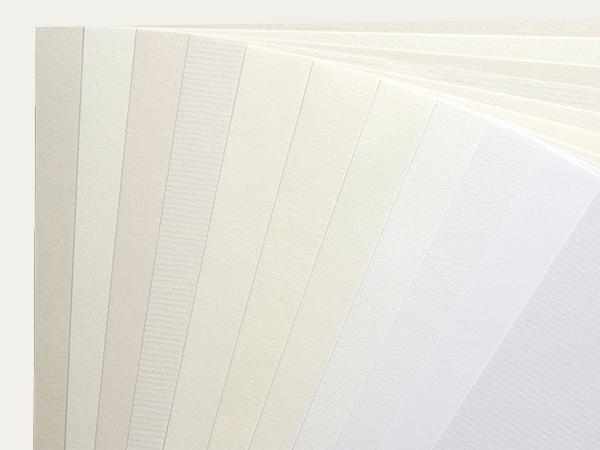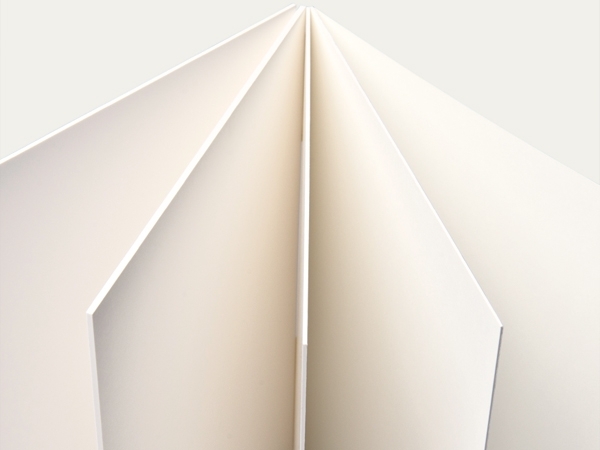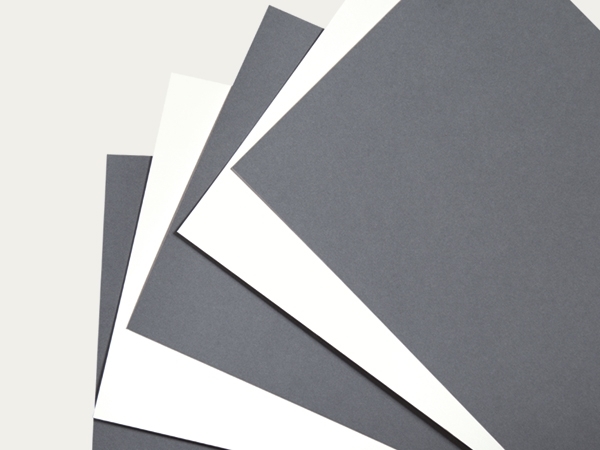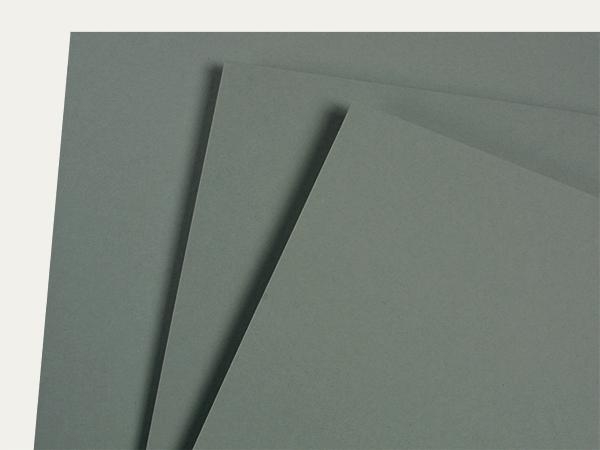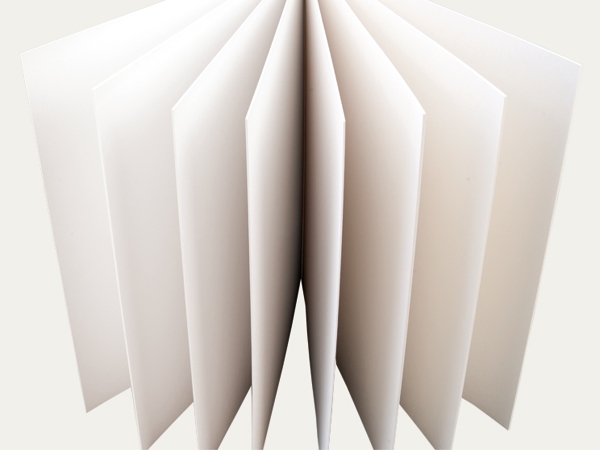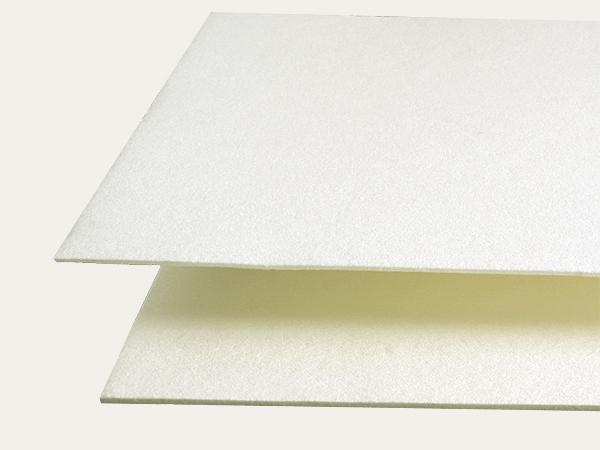Boards
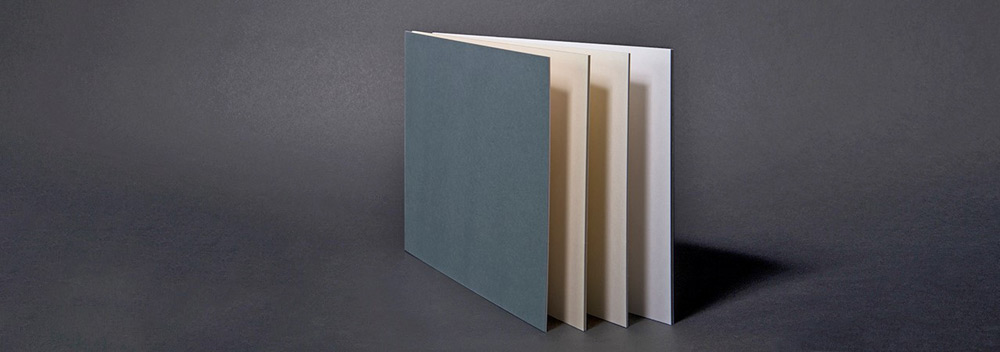
Paperboard is a flat, sheet material made essentially from fibres, predominantly of plant origin. Its basis weight starts from approx. 150 gsm. Board is a generic term that covers a range of grades and qualities of papers. The papermaker distinguishes between single-layered and multiple-layered board material. The layers are bonded together using a technique called couching (wet paper fleece is mounted together using pressure) or with an adhesive glue. Depending upon the intended use, paperboard is produced according to its preferred properties. The criteria for production may include flatness, creasing ability, gap strength, bending stiffness, cutting quality, thickness/specific volume etc. All paperboard qualities made by KLUG-CONSERVATION are guaranteed to be ageing resistant according to the technological basis of the EN ISO 9706 norm.
Mounting boards
A mounting board is a flat frame surrounding a picture, which fulfils decorative or protective purposes. Mounting boards not resting directly on the original create a distance to the glass and thereby provide good protection. A shadow gap can be used to prevent development of a margin due to exposure to light. The cut-out at the same time draws attention to the original. All mounting boards by KLUG-CONSERVATION are compliant with EN ISO 9706 and offer unlimited ageing resistance.» to the product group
Conservation boards
Conservation board is premium-quality mounting board composed of a number of thinner layers enhancing stiffness and planarity. Use of light-fast, water-insoluble pigments facilitates value-conserving storage and presentation. All our conservation boards meet the technological requirements of EN ISO 9706 and the material specifications of ISO 16245. KLUG-CONSERVATION is moreover the first supplier of emission-free conservation boards in the world (marked as ES products).» to the product group
Backing boards
Backing boards for conservation-quality picture framing should be selected carefully, since placement of the original on the backboard leads to maximum possible contact. Apart from backing boards made of solid board, KLUG-CONSERVATION offers backing boards composed of single-/multi-ply corrugated boards as well as of honeycomb panels. Backing boards should be ageing resistant and offer low/zero emission. Backing boards made of secondary raw materials, synthetic materials or wood pulp are not suitable for use in conservation-quality picture framing.» to the product group
Archival boards
Ageing-resistant KLUG archival board is specifically developed to fulfil processing and long-term archiving requirements. Paper technologists at KLUG customize boards for specialists to allow them achieve optimal results when processing the material to folders, envelopes or boxes. Depending on the intended use, boards may be smooth, erasable, dyed throughout, with top surface finish, dirt resistant, resistant to dry wiping, with very good creasing properties through a higher content of long fibres and without optical brightening agents. Thicker boards may however also possess a soft core in order to obtain good creasing results.» to the product group
Photographic archival boards
Normally the difference between photographic archival board and conventional archival board is the lack of alkaline buffer. This board is generally dyed natural white throughout, without optical brightening agents and with a pH of 7.0. Boards without alkaline buffer are generally used in direct contact with photographic layers. All KLUG-CONSERVATION boards, as well as the majority of other products of the company, have passed the Photographic Activity Test (PAT) compliant to ISO 18916.» to the product group
Blotting boards
Blotting board is a neutral, soft, unglued, without an alkaline buffer (unbuffered), minimally pressed, highly absorbent, acid-free board without optical brightening agents. It consists of a high proportion of cotton fibres. Thanks to the open capillaries of blotting board, fluids can be absorbed very quickly and effectively. KLUG-CONSERVATION blotting boards offer a particularly high capillary rise of over 150 ml in 10 min. When treated appropriately, blotting boards can be used for many processing cycles in restoration processes.» to the product group
